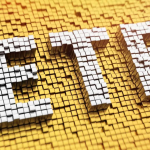High-yield investments have long been a favored option for investors seeking robust returns and a chance to capitalize on market opportunities. However, high-yield investments come with their own unique set of challenges and considerations. In this article, we’ll explore the dynamics of the high-yield market, its attractions and pitfalls, and provide insights into strategies for successful high-yield investing.
Understanding High-Yield Investments
High-yield investments, often referred to as “junk” bonds or speculative-grade bonds, are debt securities issued by entities with credit ratings below investment grade. These issuers typically offer higher yields to compensate for the increased risk associated with their bonds. High-yield investments can take various forms, including corporate bonds, municipal bonds, and dividend-paying stocks.
Attractions of High-Yield Investments
Higher Yields: The primary allure of high-yield investments is, of course, the potential for higher yields. These investments offer an opportunity to generate substantial income, making them attractive to income-seeking investors.
Diversification: High-yield investments can provide diversification in an investment portfolio. Their performance often differs from that of traditional bonds or equities, potentially reducing overall portfolio risk.
Economic Conditions: High-yield investments can perform well in certain economic conditions, such as periods of economic growth or declining interest rates. This can enhance portfolio returns.
Challenges and Considerations
Credit Risk: High-yield investments carry a higher level of credit risk. Issuers are more likely to default on their bonds, which can result in losses for investors.
Market Volatility: High-yield investments are more sensitive to changes in economic conditions and market sentiment. They can experience substantial price fluctuations, which can be unsettling for investors.
Liquidity Risk: Some high-yield investments can be illiquid, meaning they are not easily bought or sold. This can limit an investor’s ability to exit a position in a timely manner.
Interest Rate Sensitivity: High-yield bonds are sensitive to interest rate changes. When interest rates rise, bond prices typically fall, potentially impacting the value of high-yield investments.
Strategies for High-Yield Investing
Diversify Your Portfolio: Diversification is a key strategy for high-yield investing. By spreading your investments across various issuers, industries, and asset classes, you can reduce risk. Diversification helps mitigate the impact of potential defaults from individual bonds or issuers.
Conduct Thorough Due Diligence: High-yield investments require diligent research. Carefully evaluate the financial health of issuers, their ability to meet debt obligations, and the overall creditworthiness of the investment. Ratings from credit agencies can provide valuable insights, but they are not infallible.
Consider the Economic Cycle: The performance of high-yield investments is often closely tied to the economic cycle. Consider the current economic conditions and the potential impact on high-yield assets. For example, high-yield bonds may perform well during economic expansion but could face challenges during a recession.
Manage Interest Rate Risk: To manage interest rate risk, consider the duration of high-yield bonds. Shorter-duration bonds are less sensitive to interest rate changes, which can provide stability in a rising rate environment.
Monitor and Rebalance: High-yield investments require active monitoring. Keep an eye on the financial health of issuers and adjust your portfolio as necessary. Rebalancing can help maintain your desired risk-return profile.
Professional Guidance: Consider consulting a financial advisor or portfolio manager with experience in high-yield investing. Professional guidance can be invaluable in navigating the complexities of this market.
Investing in high-yield assets can be rewarding, but it is not without its share of risks. Successful high-yield investing requires a well-thought-out strategy, careful due diligence, and a keen understanding of the economic and market conditions. By diversifying your portfolio, conducting thorough research, and actively managing your investments, you can position yourself to play the high-yield rally with confidence. High-yield investments can be a valuable addition to a diversified portfolio, offering potential for enhanced returns and income generation.



























